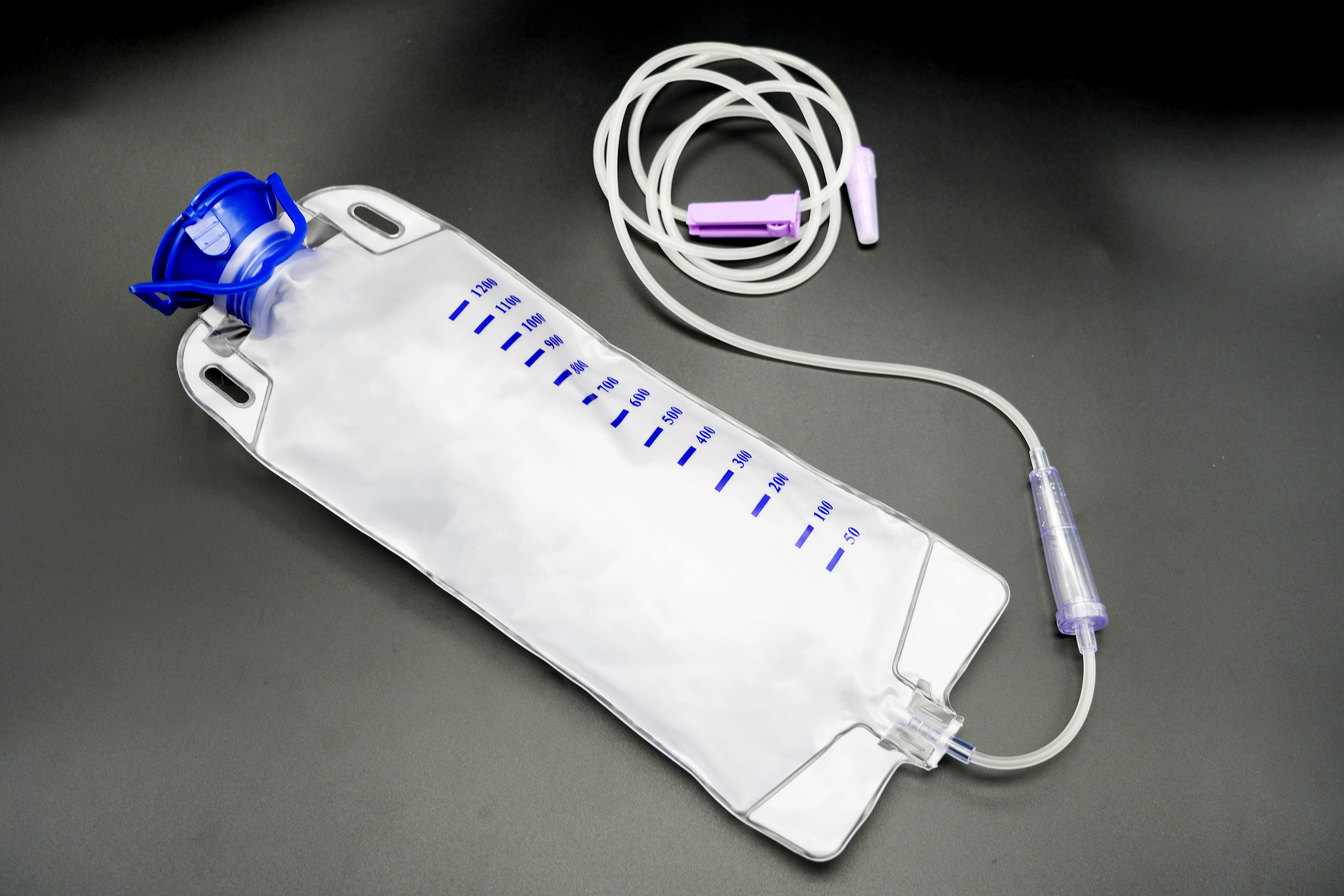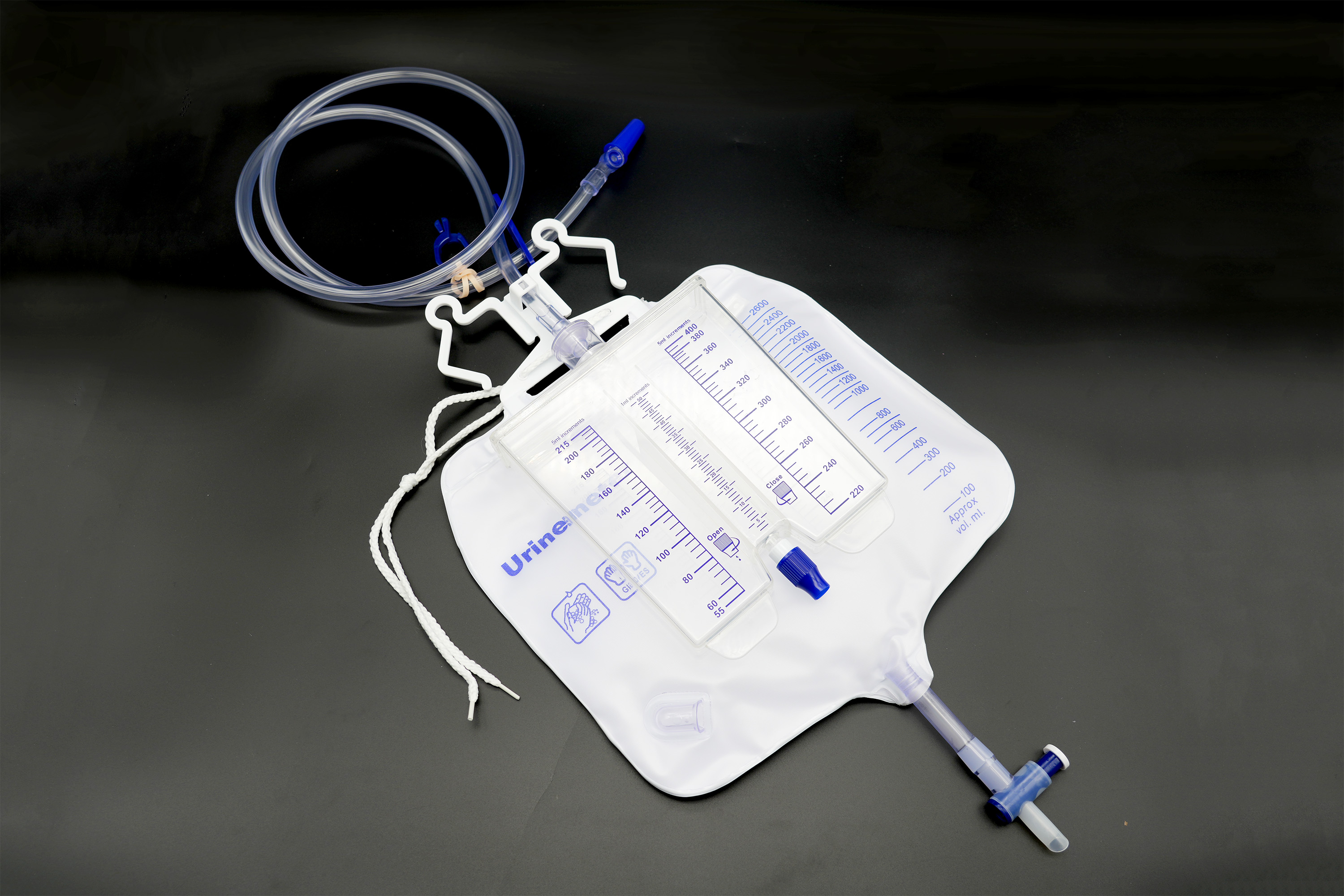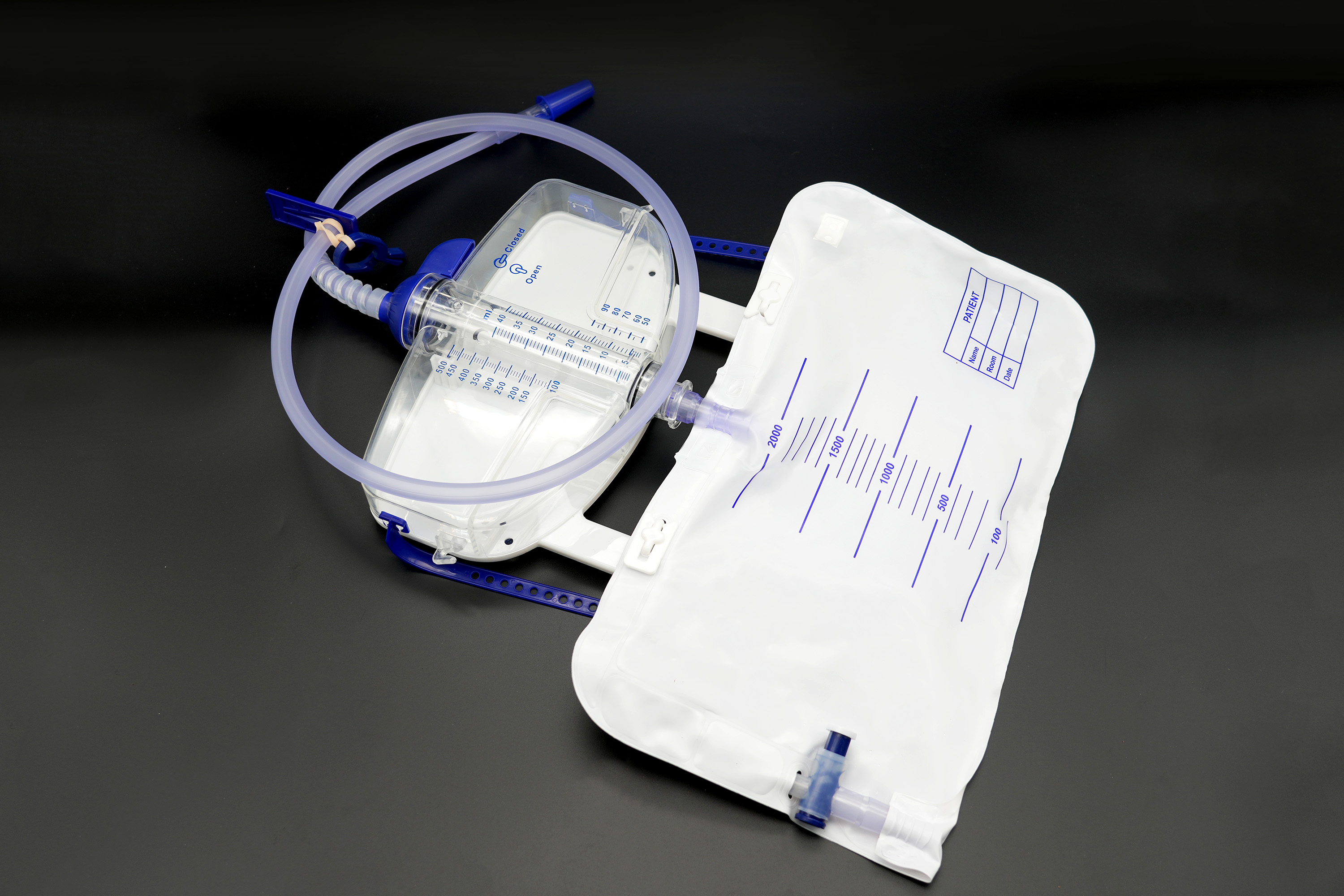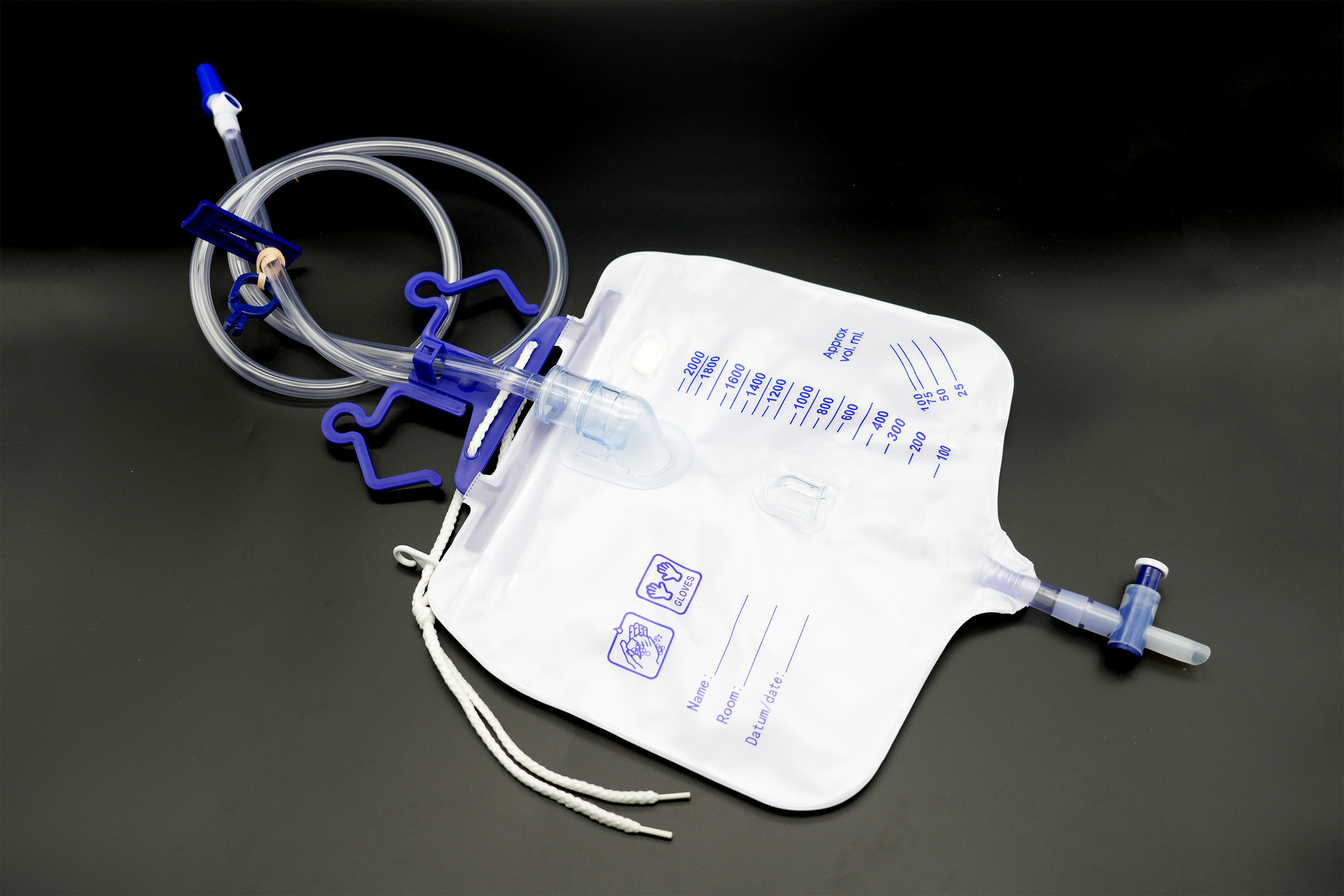
You Are Here:Home > News Center
> Industry dynamics
News navigation
Recommended news
Recommended products
What are the applications of precision urinary bags in surgery
source:www.jiuse882.com | Release time:2025-08-06
Precision urine bags are specialized medical devices used in surgery to monitor patient urine volume and maintain urine drainage. Their core features include correct measurement, anti reflux, and convenient operation. They are widely used in various surgeries, especially major surgeries, long-term surgeries, or surgeries that require strict monitoring of kidney function. The specific details are as follows:
1. Real time monitoring of urine output, evaluation of circulation and renal function
During surgery, urine output is an important indicator reflecting the patient's circulating blood volume, renal perfusion, and renal function (normal people urine output should be maintained at 30ml or more per hour). Precision urine bags achieve correct monitoring through the following design:
Correct scale: The urine bag usually has a scale of 0-1000ml (or higher), with a scale value of 5-10ml, which can record the urine volume per hour or at a certain stage, helping anesthesiologists and surgeons determine whether the patient's blood volume is sufficient (if intraoperative bleeding leads to a decrease in urine volume, timely fluid replacement or blood transfusion is needed), and whether renal function is impaired (such as a sudden drop in urine volume may indicate renal ischemia).
Transparent bag body: It is convenient for medical staff to observe the color of urine at any time (such as hematuria indicating urinary system damage or bleeding), transparency (such as turbidity indicating infection), and provide a basis for judging the condition during surgery.
Applicable scenarios: general anesthesia surgery, cardiovascular surgery, neurosurgery surgery, organ transplantation surgery, and other surgeries that require strict monitoring of vital signs.
2. Safely drain urine and avoid intraoperative interference
During surgery, patients may experience urinary reflex due to anesthesia (especially general anesthesia), and urine needs to be drained through a catheter connected to a urine bag. The structural design of a precision urine bag ensures safe drainage
Anti reflux device: The urine bag is equipped with a one-way valve or reflux barrier film, which can prevent urine from flowing back to the bladder and reduce the risk of postoperative urinary tract infection (the patient's immunity temporarily decreases during surgery, and the risk of infection is higher).
Sealed design: The bag body is tightly connected to the urinary catheter interface, reducing urine leakage and avoiding urine contamination of the surgical area (especially suitable for lower abdominal, pelvic, urological and other surgeries, requiring sterile surgical field).
Large capacity and scalability: Some precision urine bags have a capacity of up to 1500-2000ml and support temporary discharge (through a bottom discharge valve) without frequent replacement, avoiding interruption of the surgical process.
3. Adapt to special surgical needs
In some targeted surgeries, the function of precision urine bags can further meet special needs:
Urological surgery: such as bladder surgery, it is necessary to record the difference in urine volume and the amount of flushing fluid (such as physiological saline) during the operation to determine the bleeding situation of the surgical wound (if the difference is too large, it may indicate active bleeding). The measuring function of the precision urine bag can directly assist in the calculation.
Long term surgery: such as orthopedic major surgery (total hip replacement, spinal surgery), complex tumor resection surgery, etc., the operation time often exceeds 3-4 hours. The stability of precision urine bags (such as anti compression, anti rupture) and continuous measurement ability can ensure uninterrupted urine volume monitoring throughout the entire process.
Pediatric surgery: Children have a relatively low urine volume (such as infants and young children with an hourly urine volume of about 1-2ml/kg), and the scale of ordinary urine bags is blurry. However, the scale of precision urine bags can meet the correct recording of low urine volume, avoiding the influence of measurement errors on judgment.
4. Postoperative transition connection
After the surgery, the patient needs to be transferred from the operating room to the recovery room or ward. The precision urine bag can be used continuously, and its data (such as accumulated urine volume during the operation and the latest recorded time) can provide continuous monitoring basis for postoperative nursing, reducing information gaps during the handover process.
1. Real time monitoring of urine output, evaluation of circulation and renal function
During surgery, urine output is an important indicator reflecting the patient's circulating blood volume, renal perfusion, and renal function (normal people urine output should be maintained at 30ml or more per hour). Precision urine bags achieve correct monitoring through the following design:
Correct scale: The urine bag usually has a scale of 0-1000ml (or higher), with a scale value of 5-10ml, which can record the urine volume per hour or at a certain stage, helping anesthesiologists and surgeons determine whether the patient's blood volume is sufficient (if intraoperative bleeding leads to a decrease in urine volume, timely fluid replacement or blood transfusion is needed), and whether renal function is impaired (such as a sudden drop in urine volume may indicate renal ischemia).
Transparent bag body: It is convenient for medical staff to observe the color of urine at any time (such as hematuria indicating urinary system damage or bleeding), transparency (such as turbidity indicating infection), and provide a basis for judging the condition during surgery.
Applicable scenarios: general anesthesia surgery, cardiovascular surgery, neurosurgery surgery, organ transplantation surgery, and other surgeries that require strict monitoring of vital signs.
2. Safely drain urine and avoid intraoperative interference
During surgery, patients may experience urinary reflex due to anesthesia (especially general anesthesia), and urine needs to be drained through a catheter connected to a urine bag. The structural design of a precision urine bag ensures safe drainage
Anti reflux device: The urine bag is equipped with a one-way valve or reflux barrier film, which can prevent urine from flowing back to the bladder and reduce the risk of postoperative urinary tract infection (the patient's immunity temporarily decreases during surgery, and the risk of infection is higher).
Sealed design: The bag body is tightly connected to the urinary catheter interface, reducing urine leakage and avoiding urine contamination of the surgical area (especially suitable for lower abdominal, pelvic, urological and other surgeries, requiring sterile surgical field).
Large capacity and scalability: Some precision urine bags have a capacity of up to 1500-2000ml and support temporary discharge (through a bottom discharge valve) without frequent replacement, avoiding interruption of the surgical process.
3. Adapt to special surgical needs
In some targeted surgeries, the function of precision urine bags can further meet special needs:
Urological surgery: such as bladder surgery, it is necessary to record the difference in urine volume and the amount of flushing fluid (such as physiological saline) during the operation to determine the bleeding situation of the surgical wound (if the difference is too large, it may indicate active bleeding). The measuring function of the precision urine bag can directly assist in the calculation.
Long term surgery: such as orthopedic major surgery (total hip replacement, spinal surgery), complex tumor resection surgery, etc., the operation time often exceeds 3-4 hours. The stability of precision urine bags (such as anti compression, anti rupture) and continuous measurement ability can ensure uninterrupted urine volume monitoring throughout the entire process.
Pediatric surgery: Children have a relatively low urine volume (such as infants and young children with an hourly urine volume of about 1-2ml/kg), and the scale of ordinary urine bags is blurry. However, the scale of precision urine bags can meet the correct recording of low urine volume, avoiding the influence of measurement errors on judgment.
4. Postoperative transition connection
After the surgery, the patient needs to be transferred from the operating room to the recovery room or ward. The precision urine bag can be used continuously, and its data (such as accumulated urine volume during the operation and the latest recorded time) can provide continuous monitoring basis for postoperative nursing, reducing information gaps during the handover process.
Previous:
period
Next:
What are the characteristics of medical leg bags

- Urine Bag
- Leg Bag
- Urine Meter
- Feeding Set
Product Center
- Urine Bag
- Leg Bag
- Urine Meter
- Feeding Set
Direct train
- Company news
- Industry dynamics
News Center
- Company Profile
- Honorary qualifications
About Us
Copyright © 2021- 常熟市偉盛醫(yī)療用品有限公司
技術(shù)支持:藍(lán)戈鏈企

 WeChat:
WeChat:







 home
home
 WeChat
WeChat
 telephone
telephone